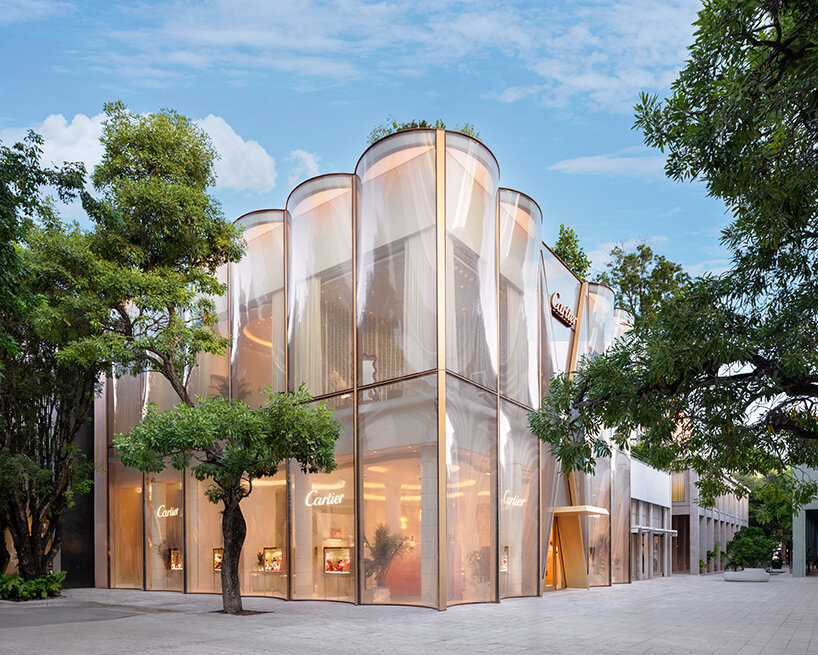Rusty House: Functional and Aesthetic Redesign of the Interior
2017-10-26 13:07
Architect: OK Plan Architects Project: Rusty house Location: Humpolec, Czech Republic Area: 250 m2 Photography: Jakub Skokan, Martin Tůma / BoysPlayNice Collaboraters: IPMB, Čadas Interiér ( custom-made furniture), Color–design ( drapes and textils ), OK Control 250 m2
建筑师:OK计划建筑师项目:生锈的房屋位置:捷克共和国地区Humpolec:250平方米摄影:Jakub Skokan,Martin Tůma/BoysPlayNice合作者:ipb,Čadas Interiér(定制家具),颜色设计(窗帘和文本),OK Control 250平方米
Built in the small town of Humpolec in the Czech Republic in 2005, the now iconic Rusty House demonstrated the possibilities of working with a relatively small and tight parcel with numerous limitations.
2005年建造在捷克共和国的小城镇Humpolec,现在的标志性的锈菌屋展示了与一个相对较小而紧密的包裹一起工作的可能性,但有许多限制。
The Rusty house was built with exposed materials in their raw state: polished concrete floors, an exposed galvanised steel structure forming the basic axis of the house, corrugated sheet metal covered with concrete for the ceiling and a concrete screed as the final wall finish. The entire exterior of the house is clad with pre-rusted sheet metal (CorTen). The landscaping of the garden forms an integral part of the project, and therefore, after being originally shunned by the public, the house naturally blends into the neighbouring line of homes. Thanks to the mature trees planted around the house, it has become virtually invisible.
Rusty房屋是在其原始状态下使用外露材料建造的:抛光混凝土地板、形成房屋基本轴线的外露镀锌钢结构、天花板用混凝土覆盖的波纹金属板和混凝土砂浆层作为最终墙面。整个房屋外部都有预锈金属板(CorTen)。园林绿化是本项目不可或缺的一部分,因此,在最初被公众分流后,房子自然地融入邻近的住宅线路。由于房子周围种植了成熟的树木,它几乎是看不见的。
After living in the house for 12 years, the owner decided to renovate the interior and to ‘soften’ the original ‘rawness’ on the main floor of the living space. Additional layers were added to the interior for both aesthetic and functional reasons. The basic parameter that had to be improved was the acoustics of the interior. All of the hard and reflective surfaces in the minimalistic interior were modified, and the acoustics of the space were improved considerably by the installation of oak ceiling panels. The wood is scored with perpendicular lines, creating an unusual impression consistent with the certain austerity of the Rusty house. New drapes also increased the acoustic comfort and intimacy of the space.
在房子里住了12年后,房主决定对室内进行翻新,并将起居空间主层的原始“粗糙”软化“。由于美学和功能两方面的原因,增加了内部的层数。需要改进的基本参数是室内的声学。通过安装橡木天花板,对室内所有坚硬的反射表面进行了改进,提高了空间的声学性能。木材是用垂直线得分,创造了一个不寻常的印象,符合一定紧缩的房子锈迹。新窗帘也增加了空间的声学舒适性和亲密性。
Other changes were focused only on the redesign of the interior. The majority of new elements were custom-made based on designs produced by the architecture studio responsible for the original and new concept. The new kitchen cabinets replace older, functionally obsolete types, while the new fireplace insert reflects the latest trends in heating. The entire lighting and control of the house underwent a major change from both an appearance and energetic perspective. The heating system was technically improved as well.
其他变化只集中在重新设计内部。大多数新元素都是根据建筑工作室的设计来定制的,负责最初的和新的概念。新的厨房橱柜取代了旧的、功能陈旧的类型,而新的壁炉插入式则反映了供暖方面的最新趋势。从外观和精力充沛的角度来看,整个房子的照明和控制都发生了重大变化。加热系统在技术上也得到了改进。
The owners don’t perceive the renovations as a reconstruction but rather as added functional layers applied to the original raw structure; the old and the improved complement one another and form a harmonious, new whole. ‘It’s fantastic that the house is able to naturally respond to new demands and ages or matures with us’, noted the satisfied owners.
业主们并不认为翻新是一种重建,而是将功能层添加到原有的原始结构上,旧的和改进的相互补充,形成一个和谐的、新的整体。满意的业主说:“这房子能自然地应对新的需求和年龄,或者和我们一起成熟,这真是太棒了。”
 举报
举报
别默默的看了,快登录帮我评论一下吧!:)
注册
登录
更多评论
相关文章
-

描边风设计中,最容易犯的8种问题分析
2018年走过了四分之一,LOGO设计趋势也清晰了LOGO设计
-

描边风设计中,最容易犯的8种问题分析
2018年走过了四分之一,LOGO设计趋势也清晰了LOGO设计
-

描边风设计中,最容易犯的8种问题分析
2018年走过了四分之一,LOGO设计趋势也清晰了LOGO设计




























































